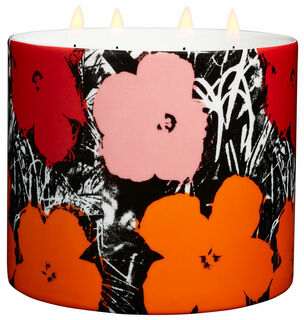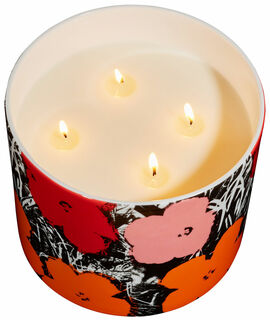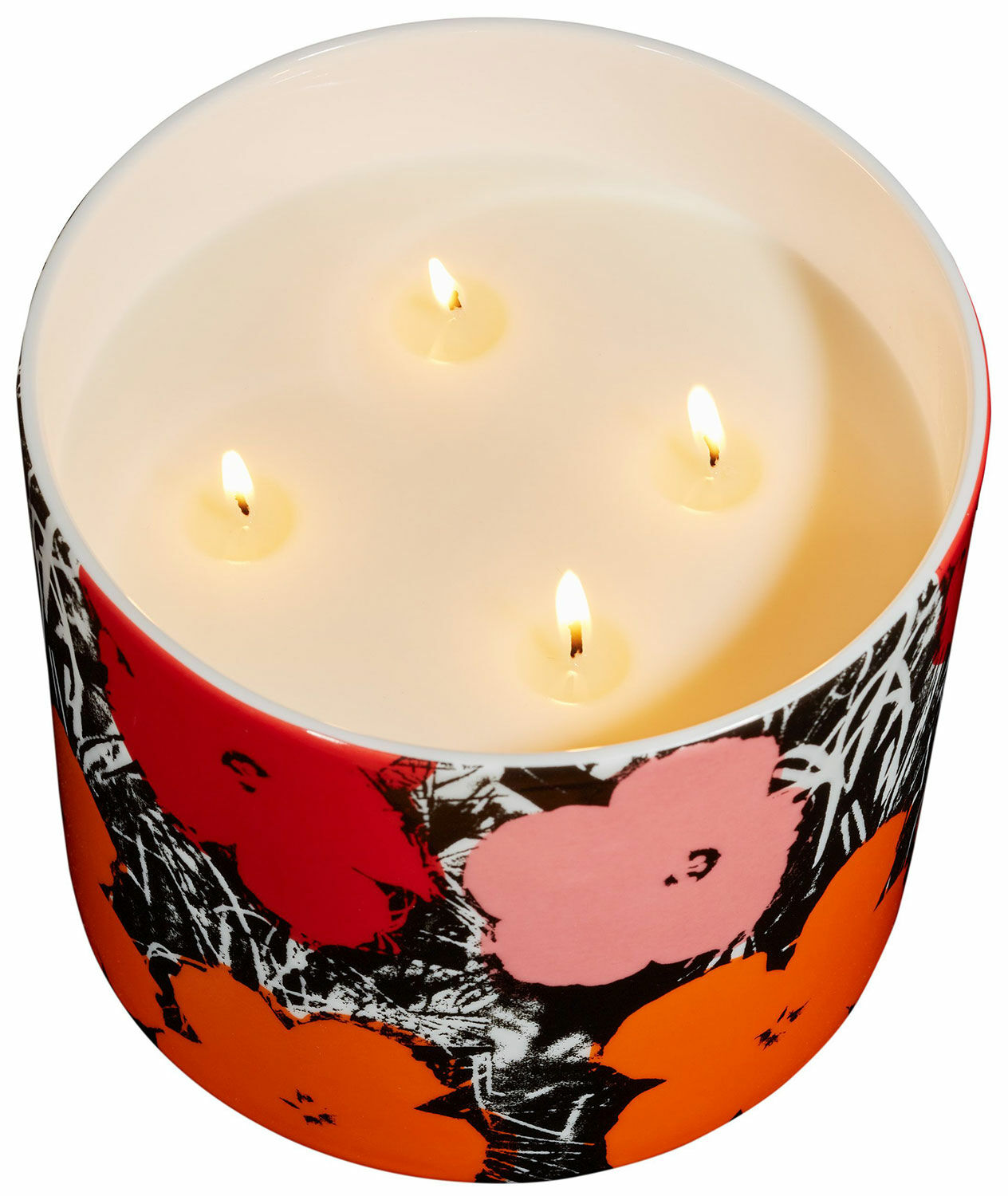Scented candle in porcelain bowl "Color Flowers", red/pink
Scented candle in porcelain bowl "Color Flowers", red/pink
Quick info
porcelain | signature | Ø 17 cm | height 14 cm | incl. gift box
Detailed description
Scented candle in porcelain bowl "Color Flowers", red/pink
Scented candle in porcelain bowl featuring the motif "Color Flowers", red/pink, from the artwork "Flowers on White," 1964-65 by Andy Warhol. Created in an exclusive collaboration with the Andy Warhol Foundation of Visual Arts and Ligne Blanche Paris. ©/®/TM The Andy Warhol Foundation for the Visual Arts, Inc. All rights reserved. Scent by Givaudan: "Cinnamon - Apple - Caramel - Vanilla". Diameter 17 cm, height 14 cm, with Andy Warhol's signature on the back. Shipped in an attractive gift box.

About Andy Warhol
1928-1987
Andy Warhol was America's most famous artist. He was considered a revolutionary, eccentric and inventor of Pop Art, all at once. Art critics praise him with titles that have never been bestowed on any artist before - not even Pablo Picasso or Salvador Dali. Alfred Nemeczek comments: "They (the praises) ranged from "pop star" to "pop artist", elevated the "pop genius" to "pop prince" to "prince of pop" and further up to "pop king", "pop tsar" and "grand mogul". But the "Picasso of Pop-art" has also been baptised as "High Priest" and "Pope of Pop"." (Artists - Critical Encyclopedia of Contemporary Art)
Warhol was born in Pittsburgh in 1928 and died in New York in 1987. After high school, the son of Czech immigrants went to the Carnegie Institute of Technology in Pittsburgh as a working student. In 1949, he settled in New York and three years later he made his debut with his work at the Hugo Gallery. Until that time, he was working as a commercial artist for fashion magazines, designing Christmas cards, LP covers and weather maps for television. Shortly afterwards, however, the artist had the idea of placing everyday objects at the centre of his pictorial motifs. Using the medium of graphic art, he created coveted cult objects.
Some of his best-known works include the silkscreen paintings of the red and white Campbell soup cans and the two-dollar bill. With these works, Warhol radically broke with art tradition in the USA and England from the 1950s onwards and is considered one of the leading figures in the new art movement, called Pop Art.
Alongside Warhol, Roy Lichtenstein and Tom Wesselman are American representatives who looked for their pictorial themes in the world of advertising, comics and Hollywood superstars. Elvis Presley, Jackie Kennedy and Marilyn Monroe became icons in Warhol's pictorial repertoire.
Transforming everyday objects into works of art allows them to receive a certain level of attention that they never receive as things that are used over and over again. Warhol's way of photographically reproducing the object demanded that the object itself and nothing else must achieve an effect. The works in which he implemented repetitions of the same motif also require this, but they have an additional effect through the colourful rearrangements.
The artist sees the world as it is and represents it: "I am extraordinarily passive. I take things as they are. I just watch, I observe the world."
In the early 1950s, a movement took over the cultural scene. Young artists from the US and the UK - completely independently of each other - severed their ties with all the traditions of artistic creativity and helped modernity to achieve a new art movement.
In the US there were Roy Lichtenstein, Andy Warhol, Tom Wesselmann and James Rosenquist who were seeking their themes in the world of advertising and comics, in star cult and anonymous urban culture. With flash colouring, over dimensioning and manipulating depth perspective they created new provocative works. thanks to the famous exhibition "This is Tomorrow" at London's Whitechapel Art Gallery, Richard Hamilton and Eduardo Paolozzi are to be considered as the true pioneers of Pop Art in England. In the 1960s, they were followed by David Hockney, Allan Jones, Peter Phillips and Derek Boshier.
Ceramic product made of kaolin, quartz and feldspar.
Porcelain is formed by turning or pressing and figurative objects are cast. Complex objects have to be cast in separated steps and sections and then "assembled". After the moulding, the pieces are dried and "annealed" at about 900 °C. Next, the glaze will be applied and fired at temperatures between 1,240 °C and 1,445 °C. In renowned manufactures, the porcelain is painted by hand whereby each colour has to be fired individually and in compliance with narrow temperature tolerances.
Porcelain was invented in China and became widespread in Europe from the 16th century onwards. The first European porcelain factory was founded in Meissen, Germany in 1710.
Other famous European porcelain factories include Fürstenberg, Höchst, Schwarzburger Werkstätten, Lladró, Nymphenburg, KPM, Augarten, Sèvres, Limoges, Royal Copenhagen, Worcester. Individual factories label their products with their personal porcelain stamps so that for the collecter it is easy to identify their origin.






